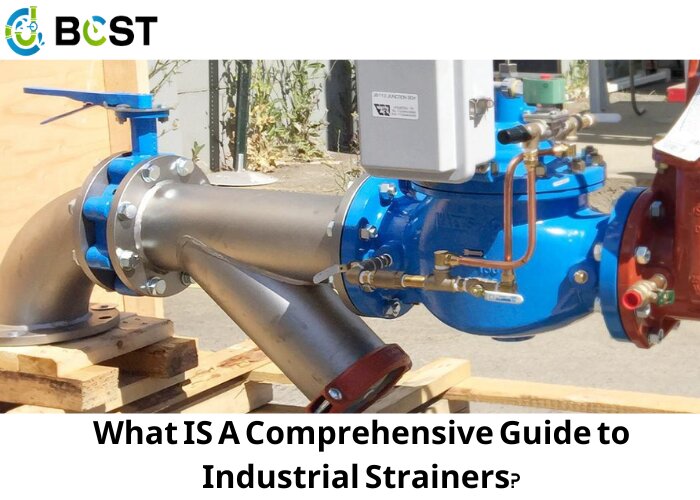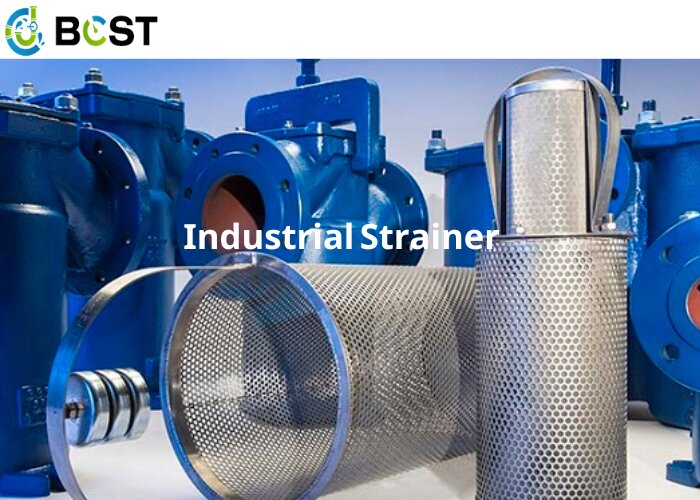
Imagine a complex network of pipelines and machinery tirelessly working to meet production demands. Now, consider the potential disruptions caused by impurities like debris, solids, or foreign particles. This is where industrial strainers step in, acting as the guardians of seamless operation, filtering out the unwanted elements that could jeopardize the efficiency and longevity of equipment.
What is an Industrial Strainer?
An industrial strainer, also known as a pipe strainer, is a common component of a pipeline system. A main body, an internal screen basket, and a blow-off valve are common components of industrial strainers. The screen area is also known as the perforation or mesh area.
During the start-up of a plant, construction materials such as nails, welding slag, dirt, tools, and even snakes can get caught in the piping system. These elements could damage the system’s pumps, compressors, and other critical equipment.
Pipe strainers do more than just remove debris from a flow-through pipe system. Rust, leaves, and other organic debris can be caught by the pipeline strainer.
People frequently confuse a strainer with a filter; a strainer, by definition, eliminates particles that can be seen with the naked eye. Furthermore, unlike a filter, which can only filter out small particles, an industrial strainer protects equipment from larger solid items.
Fiberglass, polyester, and cotton are used to make filters. Metals, typically carbon steel, are used in industrial strainers. Bronze, copper, stainless steel, and exotic materials, on the other hand, are frequently employed.
LNG plants, power plants, refineries, manufacturers, and mills all benefit from industrial strainers. They can also be found in houses, offices, and industrial structures.
Pipe and commercial strainers, for example, can aid in the removal of scale, rust, jointing compound, and loose metal from pipelines. Pipeline strainers also safeguard system components such as burners, valves, pumps, bearings, condensers, and nozzles.
Furthermore, an industrial strainer may use a filter to help remove tiny particles. Furthermore, it can provide any industrial strainer material. Furthermore, most pipe strainers are made of cast steel, cast iron, stainless steel, or carbon steel

Selecting Pipe Strainers and Commercial Strainers
Because they remove particles from the system, industrial filters and pipe strainers are frequently confused. Filters, on average, remove smaller particles. Furthermore, a micron is a unit of measurement equal to one-thousandth of a millimeter.
Furthermore, steel strainers aid in the removal of visible materials. Filters, on the other hand, remove what you can’t see. As a result, before placing your order, make certain that you have chosen the correct product.
To define a pipeline strainer, you can sometimes translate the word filter into another language. Pipeline strainers, for example, cannot catch microscopic particles, whereas filters might become clogged with huge material. Furthermore, numerous considerations must be considered while selecting the appropriate pipeline strainers or filters.
The first step is to identify the material/particle properties of an industrial strainer. The flow rate required is then determined. Finally, understanding the pressure decrease is essential. A broken system’s operating costs and expenses can be exorbitant. Determine whether or not harmful material is passing through the pipe strainer. Stainless steel is normally the best material.
A notional velocity of 7 feet per second offers a tolerable pressure drop for simplex or duplex strainers in water service. Lower velocities, on the other hand, may necessitate service due to the material’s increased viscosity. Pressure drops for service are often required in the one to two PSIG range.
Factors to Consider in Selecting Industrial Strainers
Velocity: May range from 3 ft. per sec. Downward to less than one ft. per sec.
Maximum Allowable Working Pressure: The flange rating should not be relied upon to indicate the maximum or design working pressure.
Frequently, specifications do not specify a working pressure but merely a flange connection rating, such as a strainer with 8″ 150 LB ASME flanges. Because ASME regulations allow for higher working pressures, this flange rating does not represent maximum working pressure.
An 8″ 150 LB ASME flange, for example, can withstand pressures of 275 PSIG at temperatures ranging from -20 to 100 F. Strainer design pressures do not meet ASME flange pressure or temperature specifications.
A strainer with 8″ 150 LB flanges is typically intended for 150 PSIG MAWP, and the appropriate industrial strainer can be chosen by specifying the same working pressure and temperature. Furthermore, perforation, slot, or mesh size – select basket holes based on the equipment to be protected.
Applications should not be filtered finer than necessary, as this will result in frequent and unneeded cleaning. Wedge wire-slotted baskets have a larger open area and superior collapse resistance than equivalent perforated plate or mesh-lined baskets.
They are also easy to clean and have a greater capacity for backwashing.
Open Area Ratio: The yardstick for assessing the amount of time a strainer will work without cleaning or experiencing pressure drop is the open area ratio.
The link between the internal cross-sectional area of the input pipe and the total open area of the basket apertures is represented by this ratio. A 1:1 ratio, for example, would provide unlimited flow while clean but would inhibit flow as blockage occurs. A 2:1 ratio, on the other hand, would still supply full flow even after the screen was 50% obstructed.
It should be noted that automatic self-cleaning strainers will work effectively with lower ratios because the automatic cleaning will always keep 100% of the flow area open. Again, wedge wire baskets are favored since they provide more open space.
Viscosity: Viscosity is a unit of flow resistance measured in centipoise. Oils, tar, and other viscous fluids do not flow easily.
Dirt Loading: The percentage by weight of particulate contaminant in the liquid stream to be filtered, or the slurry of particulate matter from which moisture is removed.
Flow Rate: The volume of liquid to be filtered, measured in gallons per minute (GPM).
Microns or standard US mesh sizes are used to measure the mean diameter of the smallest particles to be eliminated.
Service Temperature: Both the service and design temperatures should be included.
Life Cycle Cost: The capital and operating costs spread across the unit’s estimated life.
Because of the cheap initial cost, one may be tempted to get a strainer. Other characteristics, such as basket cleaning and replacement, as well as the associated labor, disposal, and production downtime costs, must be evaluated and will influence the ultimate choice.
Limited Downtime: Certain industrial processes, by definition, necessitate extensive downtime, whilst others have been developed to minimize downtime.
Material Selection: Construction materials differ depending on the application. Carbon steel and gray iron are the most cost-effective materials.
Engineered coatings are also available to protect metals from corrosion caused by process fluids and gasses.
Basket Selection: In piping strainers, industrial strainer baskets, also known as the strainer or filter element, are crucial components.
Final Thoughts
Industrial strainers are the protector in the fluid system, they filtering out impurities diligently, to make sure the equipment operate seamless and useful life. Their significance not only the surface filtration but also expand to material choosing, structure design and operate parameters,etc. From power plants to refineries, on flexible applications, or in the aspect of protecting key instrument , industries strainers is the indispensable instrument, as the protector , they play an important role on keeping the maintains efficiency, reduces downtime, and maintains the reliability and sustainability of industrial processes. emphasis the eternity importance in the pipe and mechanical fluid management.






